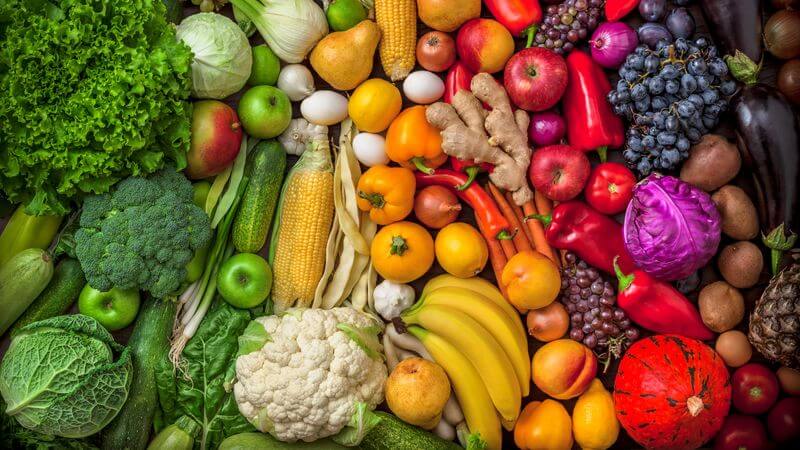The one aspect that no one can stay without is meals. It is a commodity that has not been elective and is a simple necessity for all. Our eating habits and food styles have largely been industrialized and mass-produced within the closing century. With the fast-paced lives that have become normativised, consuming healthfully has downgraded from a rudimentary requirement to an unprecedented luxurious no one has time to indulge in.
 The need to consume wholesomely and the following demand for natural meals internationally began with an increasing variety of health problems that emerged. These problems had been retraced to reports of pesticide residue discovered in fruits and vegetables. However, natural meals have now been recognized to encompass meals, grains, pulses, teas, spices, and even oilseeds. With their creation inside the market, organic foods have won recognition because the consumers have not most effectively become privy to the risks of ingesting mass-produced food; they have also been enlightened about the benefits of eating healthfully. Organically grown merchandise contains no chemical pesticides or fertilizers and is produced with manure or compost. Even the insecticides and insecticides used are natural.
The need to consume wholesomely and the following demand for natural meals internationally began with an increasing variety of health problems that emerged. These problems had been retraced to reports of pesticide residue discovered in fruits and vegetables. However, natural meals have now been recognized to encompass meals, grains, pulses, teas, spices, and even oilseeds. With their creation inside the market, organic foods have won recognition because the consumers have not most effectively become privy to the risks of ingesting mass-produced food; they have also been enlightened about the benefits of eating healthfully. Organically grown merchandise contains no chemical pesticides or fertilizers and is produced with manure or compost. Even the insecticides and insecticides used are natural.
For a country like India that has been acquainted with a weight-reduction plan filled with flavor and doused in vats of oil and ghee, the inclination towards eating wholesome and natural has been a gradual substitute. The root of this hassle can be traced back to the idea that ingesting healthy meant giving up on everything that tastes suitable and sticking to a strict eating regimen of bland salads and greens. The notion closer to healthful and natural consumption has advanced over the last few years. People have become increasingly more privy to what organic eating involves, in conjunction with its myriad advantages. Our country’s many fitness issues have also proactively brought about people opting to devour wholesome and natural. Eating healthfully is no longer just a remoted outlook—it is a way to accomplish a lifestyle. This is affected by choices you make each day that take you similarly along the health plan.
Apart from the apparent blessings of the thoughts that sparked the fitness revolution, the surge in the growth prospects of the health and natural meals enterprise may be attributed to some of the other motives. Exposure to an entirely new array of merchandise is one of the main reasons for the equal. Over the past decade, the “superfood” “has won not simply momentum but loads of relevance, and people have turned out to be extra willing to attempt food as a part of the quintessential Indian diet. Brands are now introducing organic versions of daily-use beverages like tea, herbs, juices, etc. For the fitness-conscious client.
Another purpose behind this surge is the boom of e-trade structures. People select a hassle-unfastened system when shopping for things, and e-commerce websites serve this need impeccably. Due to this convenient setup, natural brands have observed the proper retail platform. A few factors that have contributed to the increase of this industry encompass the emphasis on exporting organic products from India. The demand for Indian organic meal products is on a constant upward push internationally, with India’s export ranking 2d most spartan to China. This, paired with the guide acquired from the authorities, has led to this sharp increase.
However, the leading cause for this growth has to be undeniably attributed to the brand-new and advanced customer awareness of the one-of-a-kind natural products within the market and the various benefits of ingesting organic food. In a technology where statistics is a click away, people are extra informed about global tendencies and general understanding phrases. Thus, millennials choose to eat healthfully and realize this does not necessarily suggest that the food is no longer. Flavors, however. However, the next boom in the call for organic farming is to taste fulfillment in India. Most natural farmers are nonetheless struggling due to inadequate coverage measures and growing input fees.
According to the WHO, India is home to 30% of the world’s money, which is owed for about 3% of the whole natural cultivation place. And with the surprising shift from conventional to natural farming, farmers experience an unexpected dip in productivity as their fields are confronted with pest attacks. This makes for an extra steeply-priced task because it means better labor charges, lower production, and better prices for the last products inside the market. Fraught with hurdles, the government needs to have contingencies in location to resource the transition to organic farming, given how this zone is about to become a part of the mainstream.
While production is being handled, the plethora of brands that have emerged inside the market has supplemented the growing variety of merchandise the client is now to have. Despite being a barely inconvenient way of eating that is always on hand and expenses a touch more important, organic meals are shifting away from a segregated area of interest marketplace. Withrecognitionit’s’srecognitionit’s’sgnitionit’s’srecognitionit’s’s’s way of life, this is set to enroll in the mainstream. This demand will surely bring down top-class pricing unavoidably, making it similarly available to the hundreds.

